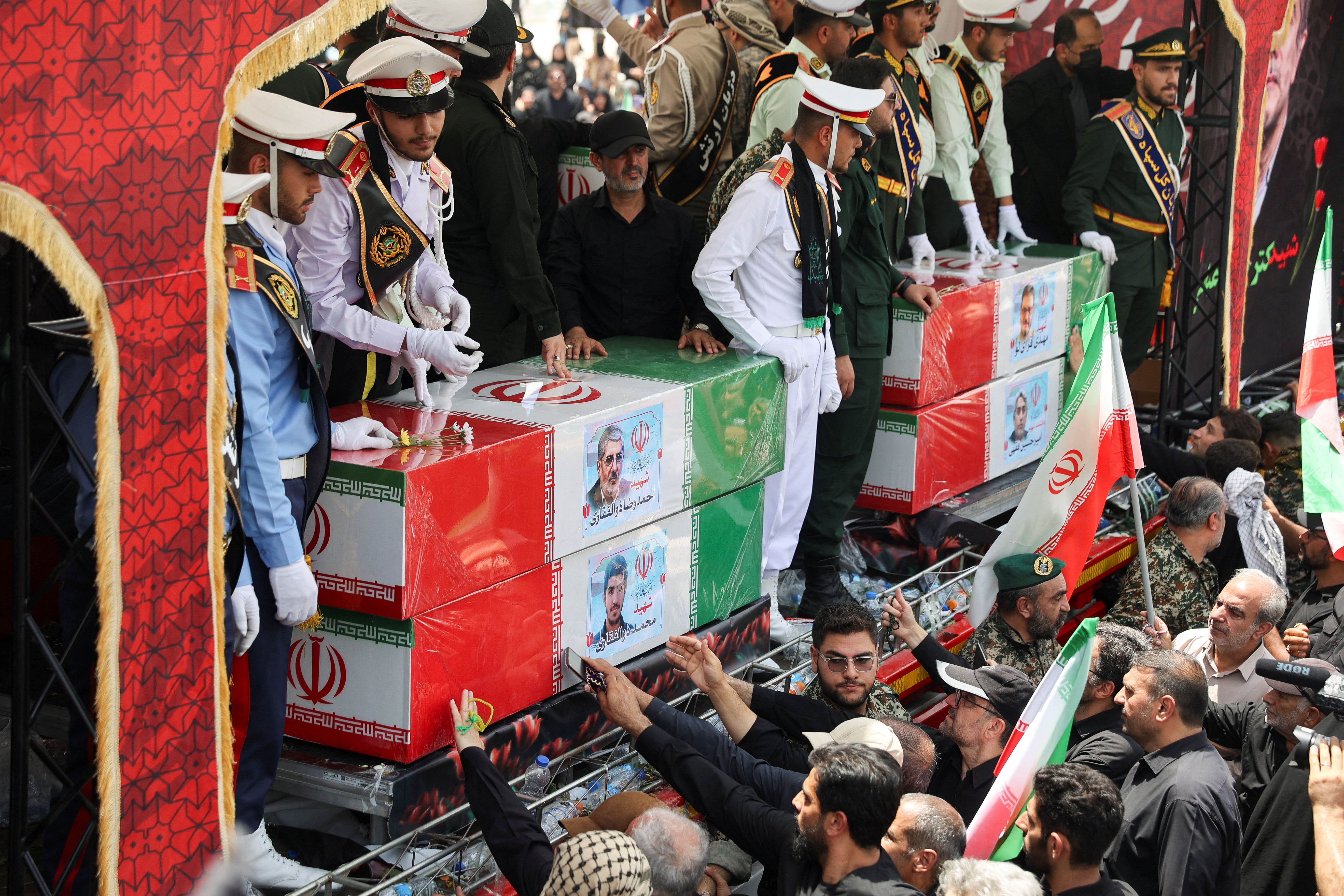Large crowds of mourners dressed in black lined streets in Iran’s capital Tehran as the country held a funeral on Saturday for top military commanders, nuclear scientists and some of the civilians killed during this month’s aerial war with Israel.
At least 16 scientists and ten senior commanders were among those mourned at the funeral, according to state media, including armed forces chief Major General Mohammad Bagheri, Revolutionary Guards commander General Hossein Salami, and Guards Aerospace Force chief General Amir Ali Hajizadeh.
Their coffins were driven into Tehran’s Azadi Square adorned with their photos and national flags, as crowds waved flags and some reached out to touch the caskets and throw rose petals onto them. State-run Press TV showed an image of ballistic missiles on display.
Mass prayers were later held in the square.
State TV said the funeral, dubbed the “procession of the Martyrs of Power”, was held for a total of 60 people killed in the war, including four women and four children.
In attendance were President Masoud Pezeshkian and other senior figures including Ali Shamkhani, who was seriously wounded during the conflict and is an adviser to Iran’s Supreme Leader Ayatollah Ali Khamenei, as well as Khamenei’s son Mojtaba.
“Today, Iranians, through heroic resistance against two regimes armed with nuclear weapons, protected their honour and dignity, and look to the future prouder, more dignified, and more resolute than ever,” Foreign Minister Abbas Araqchi, who also attended the funeral, said in a Telegram post.
There was no immediate statement from Khamenei, who has not appeared publicly since the conflict began. In past funerals, he led prayers over the coffins of senior commanders ahead of public ceremonies broadcast on state television.
Israel launched the air war on June 13, attacking Iranian nuclear facilities and killing top military commanders as well as civilians in the worst blow to the Islamic Republic since the 1980s war with Iraq.
Iran retaliated with barrages of missiles on Israeli military sites, infrastructure and cities. The United States entered the war on June 22 with strikes on Iranian nuclear facilities.
TRUMP THREAT
Israel, the only Middle Eastern country widely believed to have nuclear weapons, said it aimed to prevent Tehran from developing its own nuclear weapons.
Iran denies having a nuclear weapons programme. The UN nuclear watchdog has said it has “no credible indication” of an active, coordinated weapons programme in Iran.
Bagheri, Salami and Hajizadeh were killed on June 13, the first day of the war. Bagheri was being buried at the Behesht Zahra cemetery outside Tehran mid-afternoon on Saturday. Salami and Hajizadeh were due to be buried on Sunday.
US President Donald Trump said on Friday that he would consider bombing Iran again, while Khamenei, who has appeared in two pre-recorded video messages since the start of the war, has said Iran would respond to any future US attack by striking US military bases in the Middle East.
A senior Israeli military official said on Friday that Israel had delivered a “major blow” to Iran’s nuclear project. On Saturday, Iran’s Revolutionary Guards said in a statement that Israel and the US “failed to achieve their stated objectives” in the war.
According to Iranian health ministry figures, 610 people were killed on the Iranian side in the war before a ceasefire went into effect on Tuesday. More than 4,700 were injured.
Activist news agency HRANA put the number of killed at 974, including 387 civilians.
Israel’s health ministry said 28 were killed in Israel and 3,238 injured.







Click here to change your cookie preferences